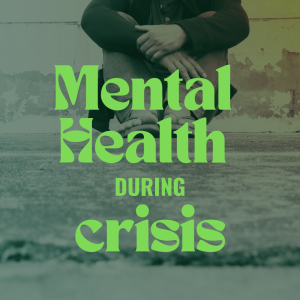In an age of hyper-connectivity, where social media platforms boast billions of users and digital communication spans continents, loneliness has emerged as a silent epidemic. A 2023 World Health Organization report revealed that 1 in 4 adults globally experiences chronic loneliness, a figure that has doubled since the pre-pandemic era. This crisis cuts across demographics, affecting teenagers scrolling through curated feeds and elderly individuals facing empty homes alike. The erosion of social support systems, once previously viewed as the bedrock of human resilience, is now fueling a mental health catastrophe. Read on to see our perspective on how reduced interactions are fueling loneliness.
Societal Trends unravelling our community ties
1. Urbanization and Fragmented Lives
As populations migrate to cities seeking opportunity, traditional community structures are now dissolving. High-density urban living often translates into impersonal interactions. A 2024 article published in the International Journal of Urban Policy and Planning revealed that a high percentage of city dwellers in urban centres like Tokyo and Lagos report having few familiarity points with their neighbours, with more people not knowing neighbours by name. The decline of multigenerational households and localized support networks leaves individuals navigating crises such as job loss, illness, stress, grief, etc., in isolation.
2. The Digital Double-Edged Sword
While technology bridges geographical gaps, it often replaces meaningful connections with transactional exchanges. A Webex research showed that 70% of Gen Z prefers texting to face-to-face conversations. This rising dislike for face-to-face interactions is now translating to increasing rates of social anxiety or difficulty in handling personal conversations. Similarly, algorithms across social media prioritizing engagement over empathy now amplify comparison culture, leaving users feeling more disconnected despite constant likes, shares, and comments.
The Mental Health Toll of These Societal Trends
The Biology of Loneliness
Chronic loneliness triggers a stress response akin to physical pain, with elevated cortisol levels increasing risks of:
-
Cardiovascular and heart disease (Journal of Cardiology Cardiovascular Risk and Prevention)
-
50% increased risk of Alzheimer’s in older adults (Imperial College NHS Healthcare Trust)
-
Depression and anxiety rates 3x higher than socially connected peers (Front Psychiatry)
The Cycle of Withdrawal
Social isolation often becomes self-reinforcing. Neuroimaging studies reveal that lonely individuals exhibit heightened vigilance to social threats, interpreting neutral interactions as hostile. This “loneliness loop” has been shown to drive avoidance behaviours, hence deepening disconnection and promoting further withdrawal.
What can you do to help
While systemic solutions are urgent, individual and community actions can mitigate the crisis, for instance.
-
Workplace Reforms – Because we spend significant time at work, companies can integrate “connection hours” into schedules, prioritizing team-building over productivity metrics within those fixed times.
-
Technology Use Redesign – We must contact friends via our favourite social media channels. However, besides likes and comments, having a direct conversation to occasionally inquire about their well-being, or ask if they are struggling with any challenge, should become prioritised.
Conclusion: Rebuilding the Village
Loneliness is not a personal failing but a societal one. As psychiatrist Dr. Vivek Murthy notes, “We evolved to survive in tribes. Our biology expects community.”
Addressing this crisis demands reimagining our interactions, workplaces, and digital spaces to prioritise human connection over efficiency. The cost of inaction is measured not just in mental health statistics but in the silent erosion of our collective humanity.
If you are unsure how to reestablish connections with friends, keep up with us to read our next piece on practical ways to rekindle old friendships.


